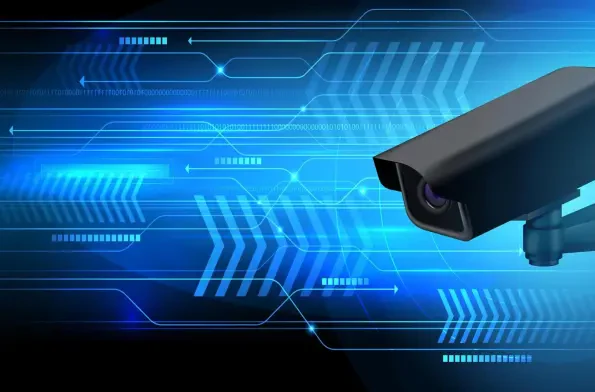Introduction to the Consumer Security Camera Industry
In an era where home surveillance has become a cornerstone of personal security, imagine discovering that the very devices meant to protect you are instead a gateway for intrusion, undermining the safety you sought. The consumer security camera market has exploded with affordable options, promising peace of mind through accessible technology. Among these, LookCam cameras have captured significant attention with over a million Android downloads, positioning them as a popular choice for budget-conscious users seeking discreet monitoring solutions.
This industry report delves into the state of consumer security cameras, spotlighting LookCam devices and their associated app as a case study in potential vulnerabilities. These products, often marketed as “spy cams” or nanny cams, are disguised as everyday household items like clock radios or USB chargers, appealing to those desiring covert surveillance. The widespread adoption of such technology raises critical questions about the balance between affordability and safety in an increasingly connected world.
The focus here is to analyze whether the convenience offered by LookCam cameras comes at an unacceptable cost to user privacy and security. As the market continues to grow, understanding the risks embedded in these devices becomes essential for consumers and industry stakeholders alike. This examination aims to shed light on systemic issues that could impact trust in low-cost surveillance solutions.
Detailed Analysis of LookCam Security Concerns
Overview of Market Trends and Popularity
LookCam cameras have carved a niche in the competitive consumer security market by offering low-cost, easy-to-use surveillance options. Their appeal lies in accessibility, allowing users to monitor homes or workplaces without significant investment. The sheer volume of downloads on Android platforms underscores a trend toward democratizing security tools, making them available to a broad demographic.
However, this popularity masks underlying concerns about quality and reliability in budget-tier products. Many users, drawn by the promise of hidden cameras integrated into mundane objects, may overlook the importance of robust security features. This trend of prioritizing cost over safety is becoming a defining characteristic of certain segments within the industry, with LookCam as a prominent example.
The data suggests a growing reliance on such devices, with sales figures reflecting a steady increase in demand for affordable surveillance. Yet, as adoption rises, so does the potential scale of exposure to flaws inherent in these systems. Industry forecasts predict continued growth in this sector, necessitating a closer look at whether current standards adequately protect users from emerging threats.
Critical Security Flaws in Hardware and Firmware
Turning to specific vulnerabilities, LookCam devices exhibit severe deficiencies in their hardware and firmware design. A glaring issue is the nonfunctional authentication mechanism; although users can set passwords, the system fails to enforce them, allowing unauthorized individuals to access and control the camera with ease. This fundamental flaw undermines the very purpose of security hardware.
Further compounding the problem are firmware weaknesses, including buffer overflows and command injection vulnerabilities. Protections like Data Execution Prevention and Address Space Layout Randomization, which are standard in modern devices, are disabled in LookCam cameras, paving the way for remote code execution through malformed requests. Such lapses enable attackers to gain full control over the device remotely.
Perhaps most alarming is the permanent nature of these issues due to the inability to update firmware. Without a mechanism to patch known exploits, these cameras remain indefinitely vulnerable to attacks. This unpatchable state highlights a critical oversight in design, posing a persistent threat to users who rely on these devices for safety.
Insecure Communication Protocols and Cloud Infrastructure
Beyond hardware, the communication protocols used by LookCam cameras are equally problematic. The PPPP protocol, developed by CS2 Network for remote access, relies on hardcoded, weak encryption keys that are susceptible to known-plaintext attacks. Frequently, sensitive data such as passwords and video commands are transmitted in plaintext, exposing them to interception.
Cloud infrastructure presents another layer of insecurity, with video uploads conducted over unencrypted HTTP connections. Authentication for cloud access hinges solely on a device ID, lacking any robust verification process. This means that anyone possessing the ID can remotely trigger uploads or retrieve recordings, even if the user has not enabled cloud storage.
Additionally, server commands can override user configurations, allowing unauthorized activation of features without consent. This lack of control over personal data storage and transmission reflects a systemic disregard for secure design in LookCam’s ecosystem. Such vulnerabilities in communication and cloud systems significantly heighten the risk of privacy breaches for users.
Ease of Exploitation and User Exposure Risks
The simplicity of exploiting LookCam devices further exacerbates their security shortcomings. Device IDs, which serve as the primary access control, are easily obtainable through app screenshots, shared videos, or WiFi broadcasts when the camera operates in access point mode. This exposure renders the devices accessible to malicious actors with minimal effort.
Compounding this issue is the weak verification code system, limited to five-letter combinations amounting to just 5 million possibilities. Without server-side rate limiting, brute-force attacks become a feasible method for gaining access. The absence of basic safeguards against such attacks illustrates a profound lack of protective measures in the design of these cameras.
Moreover, LookCam devices include WiFi scanning functions that leak data about nearby access points, which can be downloaded remotely. This information can be cross-referenced with public databases for geolocation, potentially revealing the physical location of the camera. These additional risks highlight how user exposure extends beyond mere video access to broader privacy invasions.
Accountability and Support Deficiencies
A deeper concern within the LookCam ecosystem is the complete absence of accountability and support structures. No identifiable vendor or contact information exists for users to seek assistance or report issues. This lack of transparency leaves consumers without recourse when vulnerabilities are discovered or exploited.
The backend infrastructure tied to these devices is linked to obscure server clusters, with no clear entity responsible for maintenance or security updates. This deliberate obfuscation suggests an intentional avoidance of responsibility, further eroding trust in the product. Users are left with devices that cannot be secured or supported over time.
The inability to deliver firmware updates seals the fate of these cameras as permanently vulnerable. Without a framework for ongoing security improvements, LookCam devices stand as a stark warning of the dangers posed by unsupported technology in the consumer market. This gap in accountability remains a critical barrier to ensuring user safety.
Implications for Privacy and Industry Standards
The vulnerabilities in LookCam cameras have profound implications for user privacy, as unauthorized access to video feeds and personal data becomes a tangible risk. Homes and private spaces, intended to be safeguarded by these devices, are instead exposed to potential intruders who can monitor activities without detection. This breach of trust undermines the core value proposition of security cameras.
Real-world scenarios amplify these risks, particularly through user behaviors such as sharing app screenshots that inadvertently reveal device IDs. Such actions, often done without awareness of the consequences, facilitate exploitation on a larger scale. The intersection of technical flaws and user habits creates a perfect storm for privacy violations.
Comparatively, products like LookCamPro, though visually similar, do not share these specific issues, clarifying the scope of affected devices. This distinction is crucial for industry analysis, as it underscores the need for standardized security benchmarks across all consumer surveillance products. The broader market must address these disparities to prevent similar lapses in other low-cost offerings.
Reflecting on Findings and Future Outlook
Looking back, the investigation into LookCam cameras revealed a landscape rife with critical security flaws, from ineffective authentication and broken encryption to unpatchable firmware and nonexistent vendor support. The analysis painted a troubling picture of an ecosystem that failed to prioritize user safety, leaving countless individuals exposed to privacy breaches. These findings underscored a significant lapse in the consumer security camera industry’s approach to affordable technology.
As a path forward, users are advised to discontinue the use of LookCam devices or, at the very least, refrain from sharing app screenshots to avoid device ID leakage. Beyond individual action, the industry faces a pressing need to establish stricter security standards and enforce accountability among manufacturers. Collaborative efforts between regulators and companies could drive the adoption of mandatory firmware update mechanisms and transparent support systems.
Reflecting on the broader implications, the challenges posed by LookCam serve as a catalyst for reevaluating how budget surveillance products are designed and marketed. Future considerations include fostering consumer education on security risks and advocating for certifications that guarantee a baseline of protection. These steps aim to rebuild trust and ensure that affordability no longer comes at the expense of safety in the evolving security camera market.













